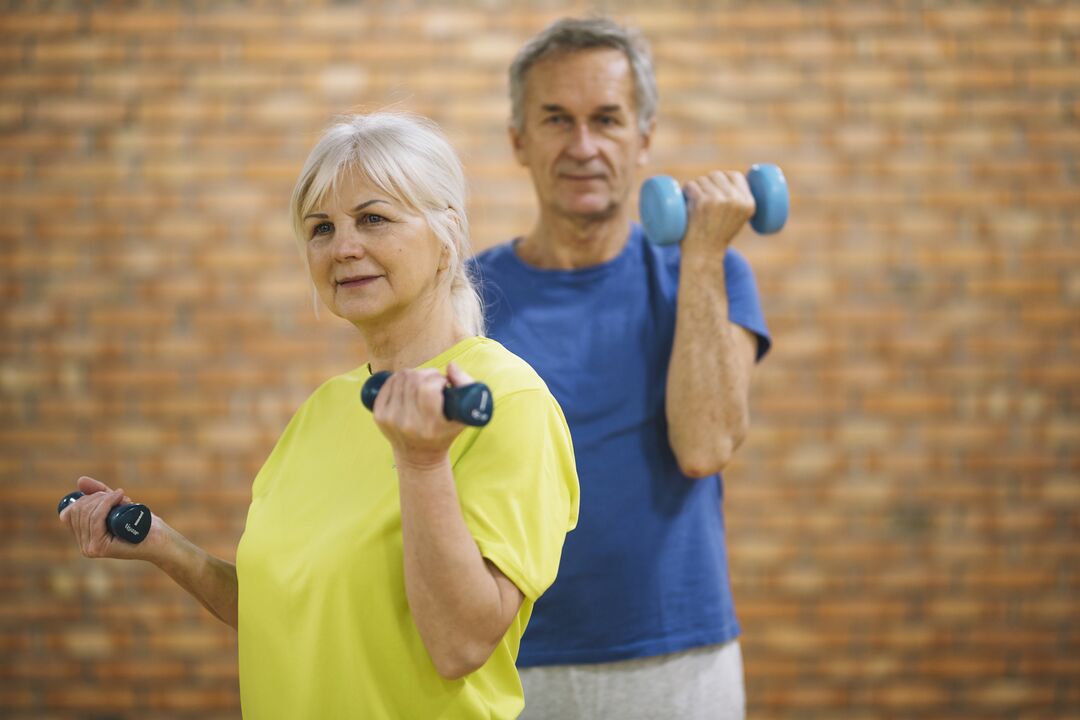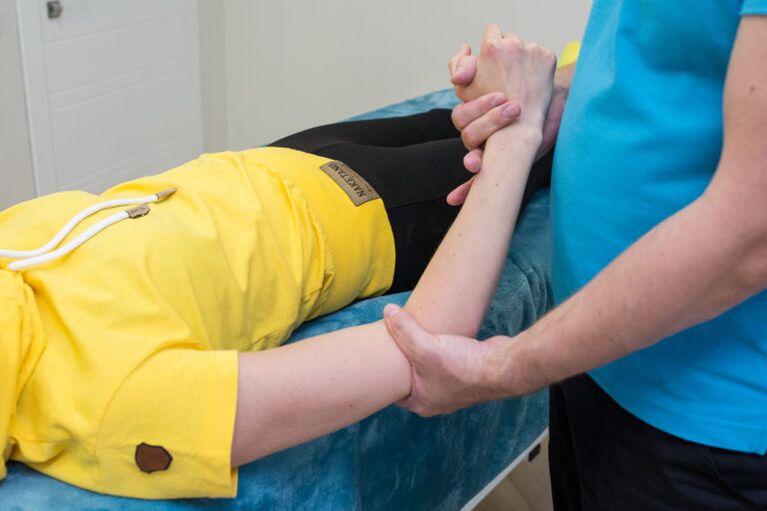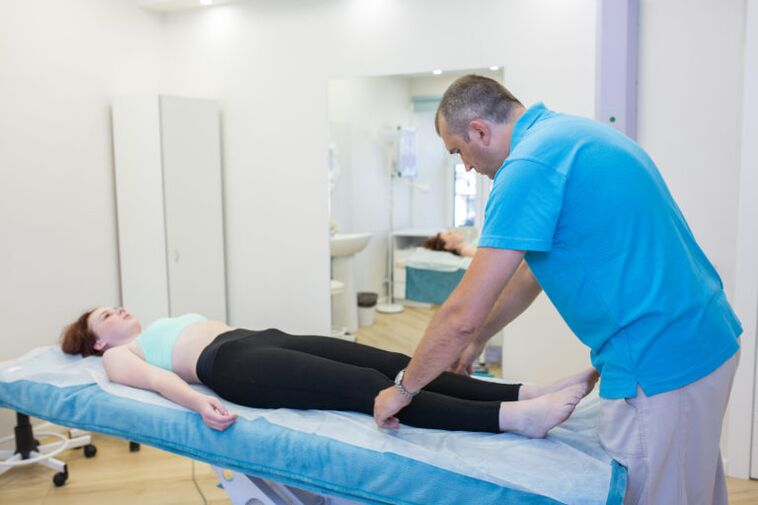Joint diseases are one of the most common manifestations of disorders of the musculoskeletal system. They develop in the presence of inflammatory, degenerative-dystrophic, infectious processes in the body, as well as as a result of trauma and congenital anomalies.
Doctors distinguish dozens of different joint diseases that have very similar symptoms (pain, crushing, restricted movement). This complicates diagnosis and interferes with timely treatment. Therefore, in this article, specialists will talk about the manifestations and developmental characteristics of the most common joint pathologies.
Characteristics of joints and the causes of their diseases
A joint is any connection of two or more bones. There are 38 pairs of joints in the human body (a total of 76 joints). They provide mobility and flexibility to our body. Movement is a vital function, and if the disease restricts it, the quality and duration of life is reduced.
Each joint has articular surfaces - these are the surfaces of the bones that go into it, covered by a special hyaline cartilage. It is dense, elastic and necessary to protect bones from abrasion during movement. It also ensures the perfect match between them. It is cartilage wear that becomes a common cause of pain, crushing, stiffness and other signs of joint disease.

Joints are characterized by a complex structure. Joint surfaces, capsule, fissure, synovium, periarticular muscles and ligaments - all of these structures provide motor and joint support functions. Its damage can trigger the development of the disease.
disease causes
Many people mistakenly believe that only the elderly suffer from joint disease due to age-related changes and weakness in the body. But it's not like that!
Joint diseases can develop as a result of:
- injuries;
- overweight;
- physical activity;
- inappropriate posture;
- flat foot;
- hereditary predisposition;
- foods with insufficient micronutrient content;
- diseases of Organs internal organs;
- metabolic disorders;
- transferred operations;
- infections.
People of absolutely any age and even those in relatively good health (eg, working-age men and women, teenagers, children, athletes, etc. ) can face the action of these factors.
As a result, this group of diseases is increasingly younger - in terms of frequency of occurrence and disability, it is second only to cardiovascular and endocrine diseases, and its treatment is associated with high financial costs.
The mechanism of development and types of diseases
In the pathogenesis of joint damage, doctors distinguish 4 possible paths:
First: the presence of inflammation in the body
This type of lesion is characterized by a sudden onset, with a rapid increase in the symptoms of inflammation: swelling, pain, redness, fever. Occurs in infections, allergies, autoimmune processes in children and adults.
juvenile arthritis
It is characterized by an autoimmune process (ie, the body self-destructs), the cause of which is unknown. Transmitted infections, even mildly (eg, vaccines), are often provocative.
The disease affects a large joint (knee, elbow) in children and adolescents, negatively affecting their growth and development. Joint pain is accompanied by severe swelling, skin redness and fever.
Rheumatoid arthritis
It is also caused by an autoimmune process with no clear cause. More often women get sick, the average age is 45-50 years. Up to 70% of patients are disabled.
It affects a small joint (or several), eg wrists, fingers. This affects the patient's ability to work and even to take care of himself. They complain of severe pain, swelling, changes in the shape of their joints and morning stiffness in them.
psoriatic arthritis
In nearly half of patients diagnosed with psoriasis, the inflammation process develops in the small joints of the hands, feet and spine. The cause of arthritis, as well as the cause of the underlying disease, is unknown.
Psoriatic arthritis can affect the interdigital and large joints (elbow, knee), one or more joints, symmetrically or not.
The main manifestation is the presence of pain that extends to the ligaments and tendons, swelling and bluish skin of the fingers, limited mobility.
gouty arthritis
It develops in the context of gout as a result of the deposition of uric acid salts in the joints. Men suffer more often than women, in the age group - 40-50 years and over 60 years, respectively.

One characteristic is the defeat of a joint, which starts suddenly, lasts several weeks, is accompanied by severe pain and swelling, with the formation of uric acid nodules (tofuses).
Spondyloarthritis with ankylosing spondylitis
Chronic injury in which the spine, paravertebral muscles, and sacroiliac joint of the pelvis are affected.
Men are more likely to have the disease than women, and it develops between the ages of 20-30 years. His main complaint is pain in the lower back, sacrum, hip joints; stiffness of movement after a period of rest (especially in the morning, after sleep).
Even with symptom relief and relative well-being, without eliminating the root cause, inflammation continues to develop and, over time, will cause a new exacerbation. Therefore, joint pathology often becomes chronic and leads to disability.
Second: the presence of a degenerative dystrophic process
With this type of injury, the joint is destroyed by physical factors. Injuries and microtrauma, constant physical effort above normal, harmful effects on the environment (hypothermia, vibration) - all these pathological factors cause cartilage destruction and narrowing of the joint space.
Osteoarthritis deforming
It develops as a result of damage and destruction to articular cartilage. Their joint surfaces become rough and sensitive to friction. Over time, the destruction process affects the bones, capsules, synovium, ligaments and muscles. Chronic inflammation and changes in the shape of the joint appear.
Osteoarthritis is the most common joint pathology. It reduces the quality of life of patients, causes disabilities and is difficult to treat. In youth, men are more likely to get sick, in old age - women.
Clinically, osteoarthrosis is manifested by severe pain and limited mobility, which increases with physical exertion. In the later stages, even rest and calm do not bring relief.
osteochondrosis
It affects the spine and is caused by degenerative processes in the intervertebral discs. Under the influence of negative factors, the nutrition of the discs is interrupted, which leads to loss of shape (even the formation of bumps and hernias), aging and destruction.

As a result, the spine loses mobility, pain, numbness, rigidity of movement, muscle weakness, difficulty in urinating and emptying the intestines, headache, dizziness. Symptoms depend on the part of the spine where osteochondrosis has developed and can be very different.
deforming spondylarthrosis
This condition is also called "facet syndrome". In this case, the destruction process affects the structures of the intervertebral joints (capsule, ligaments, facets).
Most of the time, it occurs in the most "overloaded" part of the spine - the lower back. It manifests as pain that radiates to the leg and intensifies with prolonged walking or standing in one place.
osteochondropathy
Caused by aseptic (non-infectious) bone necrosis, for example, due to impaired blood supply. As a result, bones entering the joint are subject to frequent fractures. In advanced cases, patients can be seriously injured, even while sleeping.
In the early stages, the disease does not manifest itself at all. Many of the sufferers are athletes and people who lead a "healthy" lifestyle. The former are subject to excessive stress, the latter deliberately limit their diet and deprive the body of necessary substances.
To destroy the dense and elastic cartilage, the pathogenic factor must act in the joint for years, so degenerative-dystrophic changes are more common in old age. Or he must act with superpower, as in sports.
Many professional athletes become disabled in their youth.
Third: congenital joint pathologies
This type of injury causes abnormalities in the structure and development of joints as a result of maternal infections and injuries, concomitant pathology, late toxicosis, and genetic diseases.
The frequent manifestations of congenital anomalies are birth traumas, for example, hip dislocation or fracture of the clavicle.
Congenital hip joint dysplasia
It develops as a result of a violation of the formation of all joint structures in the prenatal and postnatal period. Predisposing factors are heredity and tightness. Girls are more susceptible to this pathology than boys - the incidence rate is 80% and 20%, respectively.
With dysplasia, the shape of the joint is altered and its ligaments are very elastic. This causes dislocation of the femur and impedes mobility of the hip joint, which can lead to disability.
congenital clubfoot
Deformity in which, due to the defeat of the ankle joint, the foot deviates inward in relation to the leg.
Clubfoot tends to affect boys and, in half of the cases, it is bilateral. If the defect is not eliminated in time, the child will not be able to walk normally and will remain incapacitated.
Marfan's syndrome
Genetic pathology in which the patient has elongated bones in the arms and legs, in addition to hypermobility (excessive mobility) of the joints.
In the early stages, many congenital joint pathologies can be eliminated completely or development can be delayed using conservative methods. Late diagnosis and treatment can lead to compromised support and movement functions, including disability.
Fourth: diseases of the muscles and ligaments of the joint
Pathologies in this group usually develop as a result of increased physical exertion and hypothermia.
tendonitis
Inflammation and destruction of the tendon. It is accompanied by its tension and painful sensations, especially in time.
myositis
Development of inflammation in periarticular muscles. It is accompanied by pain when feeling the affected area, which increases with movement.
bursitis
The inflammatory process is located in the joint capsule. It often affects professional athletes (fighters, runners, weightlifters).
synovitis
Damage to the synovial membrane with accumulation of fluid in the joint cavity. It is accompanied by pain, swelling, stiffness of movement.
The relationship between the disease and the type of joint
There is a certain pattern in which the joint is affected by which pathology. Some of them even have their own specific names.
For example,knee jointcan be affected at any age, regardless of the patient's sex and occupation. Defeat of the meniscus and cruciate ligaments is more common in athletes. Gonarthrosis - in elderly people. Arthritis of infectious origin - in children.
pain inshoulder jointmay be caused by shoulder-scapular periarthritis, cervical osteochondrosis, osteoarthritis.
Forelbow jointtypical periarticular tissue damage - epicondylitis or "tennis elbow", "golfer's elbow".
The hip joint is more commonly affected in older people. As a result of osteoporosis and coxarthrosis, they are at risk for a fractured neck of the femur.
pain insmall jointshands and feet are seen in rheumatoid, psoriatic, and gouty arthritis.
However, despite the specific manifestations, the diagnosis of joint pathology often causes difficulties, which implies a late start of treatment and the risk of complications.
Symptoms and Diagnosis
Among the complaints that bother patients with joint pathology are:
- Pain;
- Swelling and swelling;
- Shape change;
- Rigidity of movement;
- Inability to perform normal range of motion.
Doctors call them joint syndrome. Doctors call them joint syndrome. Reddening of the skin, rashes, and dense nodules are also possible. Of the general symptoms, patients usually complain of increased temperature in the area of the lesion or the whole body, increased fatigue.

Reading the previous section, you may have noticed that all of these symptoms are found in almost all joint pathologies. Therefore, it is impossible to make a clear diagnosis based only on your complaints - you need an examination and consultation with a doctor.
During the examination of the patient, the doctor does not just pay attention to the patient's complaints. To make an accurate diagnosis, it is important to know when it occurs, which joint is affected, one or more of them, whether the lesion is symmetrical and other factors.
Let's take a look at each symptom:
Pain:
This occurs in almost all pathologies. Doctors distinguish several types of it:
- Inflammatory- increases at dawn, after a period of rest. Typical for rheumatoid, juvenile, gouty arthritis, spondyloarthritis.
- Mechanic- appears during physical exertion or a change in body position, often in the late afternoon, disappears after rest. Typical for osteoarthritis, osteoarthritis, osteochondrosis, periarticular tissue pathology.
- "To start"- occurs within the first 15–20 minutes of physical activity after a rest period. Typical for osteoarthritis.
- "Block"- caused by pinching the joint space of a cartilaginous fragment, resulting in a "wedge" of the joint. It may be accompanied by a grinding sound. Occurs in osteoarthritis.
- Constant- persists, regardless of load and time of day, may increase at night. Typical for osteochondropathy, osteomyelitis, bone tumors and tuberculosis.
Number of affected joints:
- One (monoarthritis): with juvenile, gouty, and psoriatic arthritis.
- Two to four (oligoarthritis): with rheumatoid arthritis, spondyloarthritis.
- More than four (polyarthritis): with gouty rheumatoid arthritis.
Injury symmetry:
- Symmetric: for rheumatoid arthritis.
- Asymmetric: for spondyloarthritis, gout, osteoarthritis.
- "Migratory": with gout.
Morning stiffness in joints:
It is felt by the patient as the impossibility and tension of movement. It happens in the morning and is associated with the accumulation of fluid in the joint cavity at night. Typical for rheumatoid arthritis, spondyloarthritis.
In addition, the physician pays attention to general complaints:
- Increased body temperature;
- Redness of the skin, presence of a rash;
- The defeat of Organs internal organs.

To make an accurate diagnosis, laboratory tests (blood, analysis of joint fluid) and instrumental tests (X-ray, computed tomography, MRI, ultrasound) are necessary.
Conclusion
Joint pain and dysfunction can be caused by several reasons. There are pathologies that cannot be treated, but many of them, with adequate and timely treatment, allow the person to live a full life. So if you have at least one of the symptoms listed, contact your doctor - don't diagnose yourself, don't prescribe treatment, and even more, don't tolerate pain.
We use a holistic approach to the treatment of joint pain, thanks to which many of our patients have regained the joy of movement.























